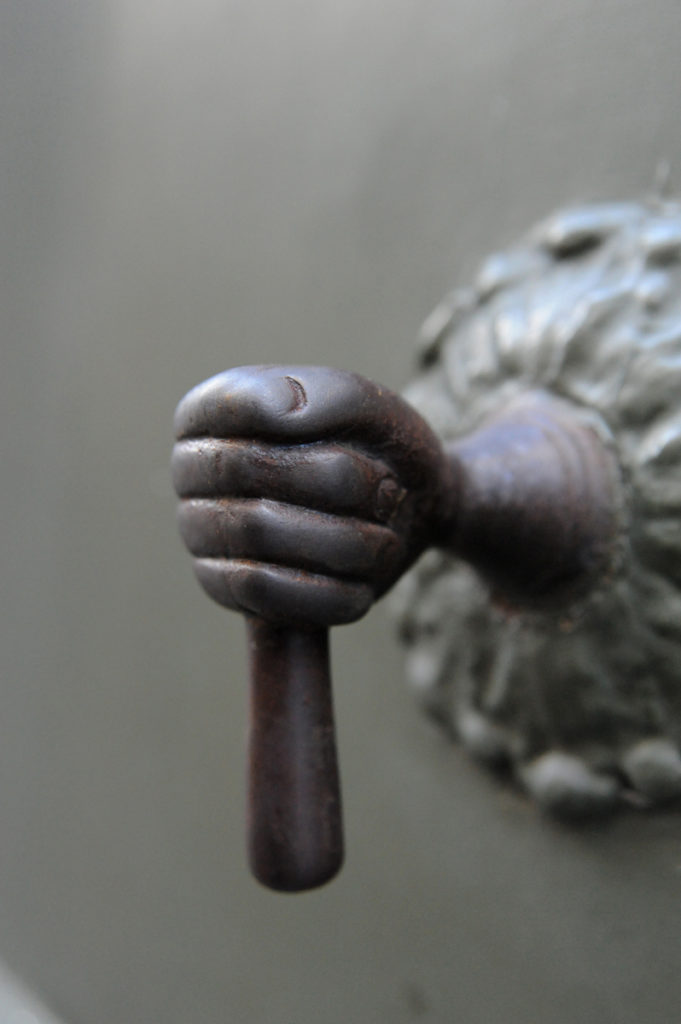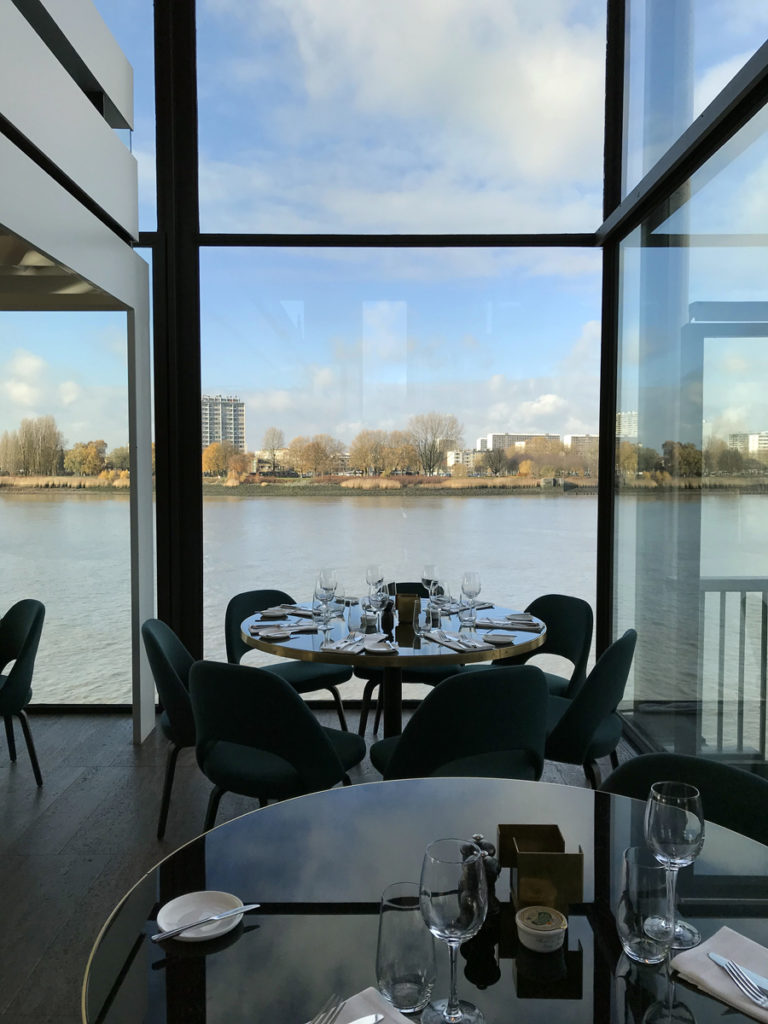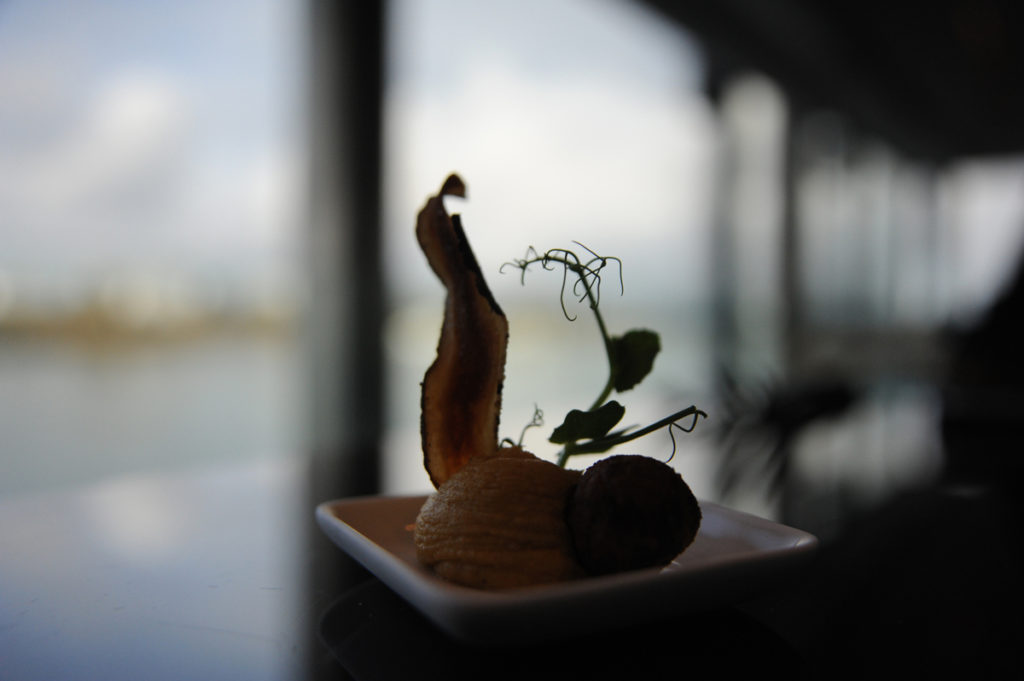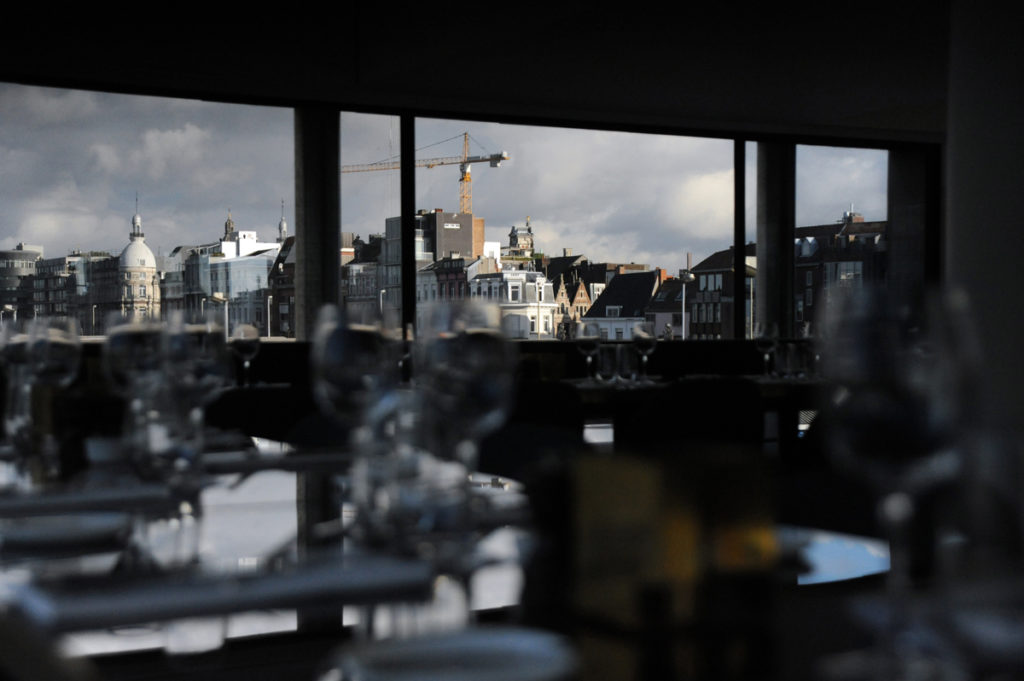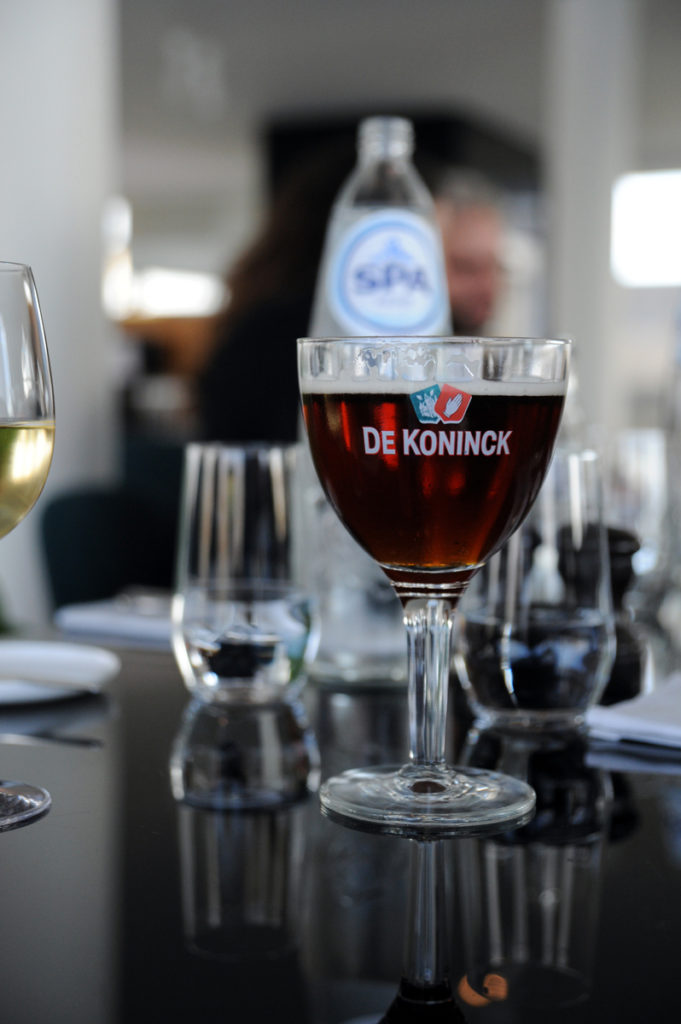What’s the first thing you do when you arrive in a new city? Check out the door furniture, sneak peeks through windows, hunt down pub carpets, look for a chip shop? Me too!
In Antwerp it’s not just any ol’ chips you’ll want to find, it’s designer fries by Sergio Herman at Frites Atelier. We settled in for the Bacon and Bearnaise seasonal special. The chips, cooked skin-on, were fluffy on the inside and crispy on the outside. That’s some good potato action there, (and I am speaking as an expert).

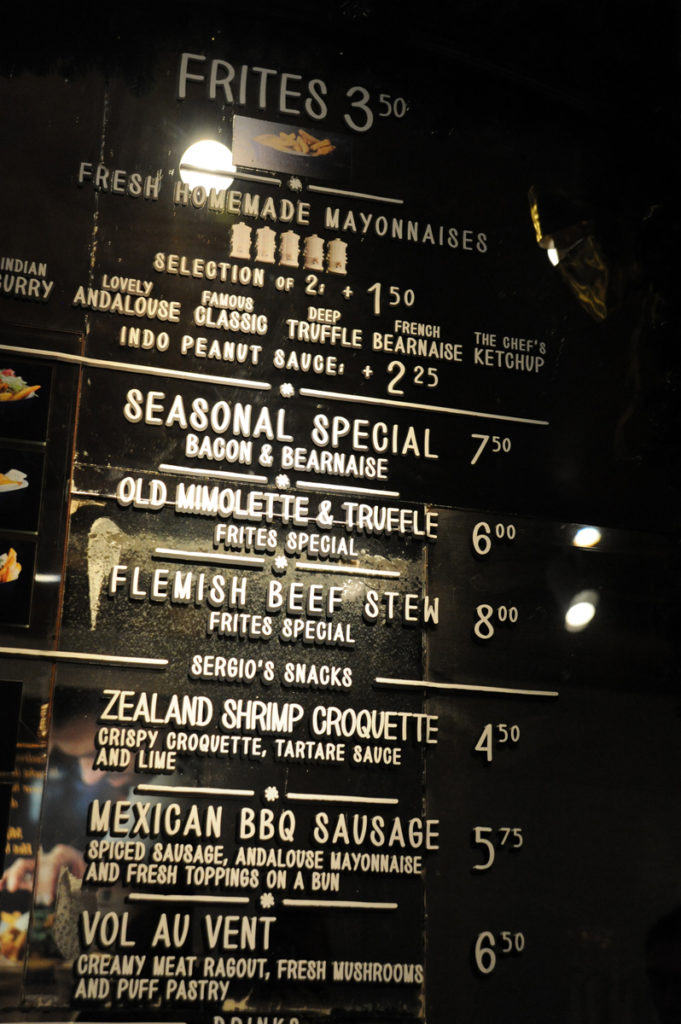
The rain started to fall heavily. Our guide was adamant that we’d survive, but I wasn’t so sure. I double wrapped my scarf round my head and hoped for the best.
We skipped from doorway to overhang, turning our faces from the driving rain to peer into the warm lit shops full of beautiful design, apparel and chocolates. Everywhere there were hands – little hand door knockers, little hand biscuits, little chocolate hands, little symbols of Antwerp.
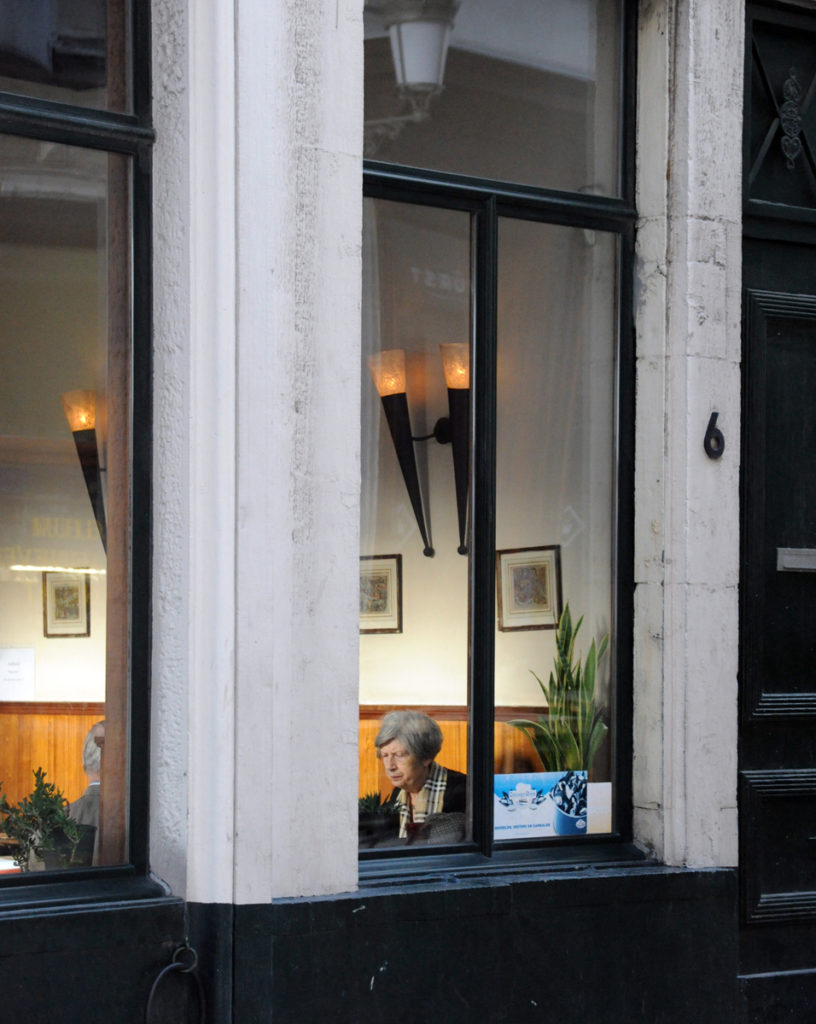
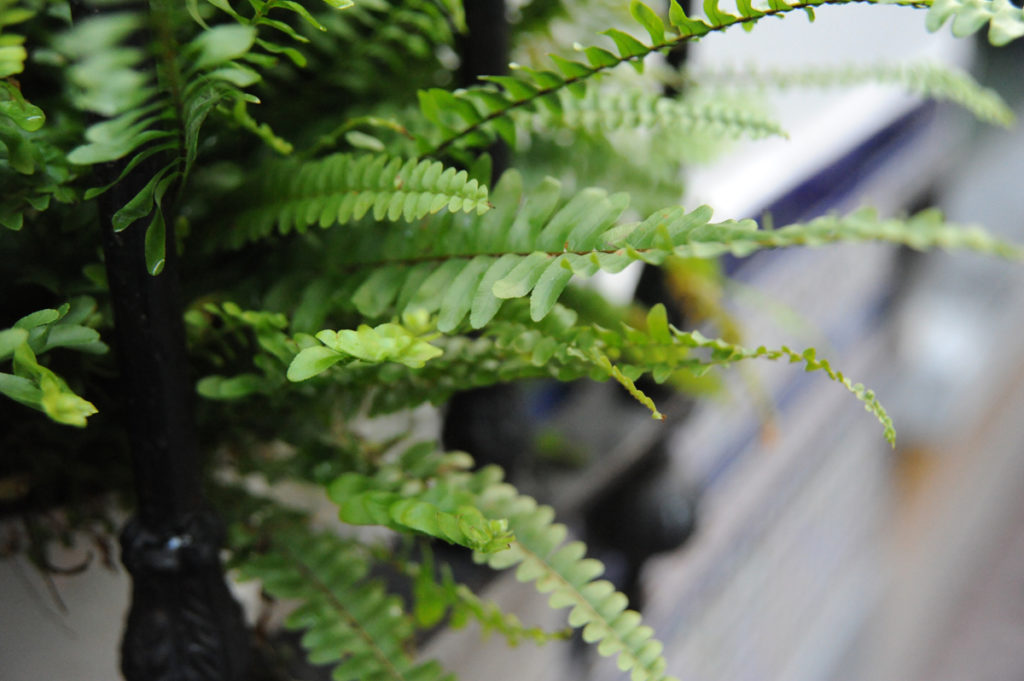

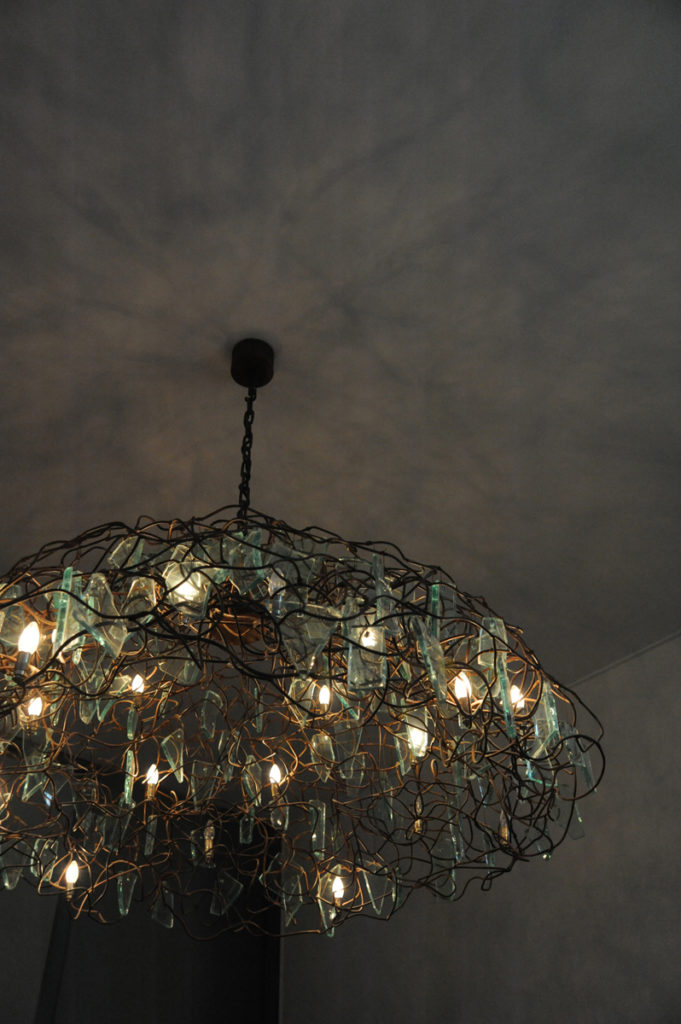
Rushing through the streets, dodging puddles, we made our way to the Museum Plantin Moretus, a UNESCO world heritage site, housed in the 16th century mansion home and printing establishment of Christophe Plantin.
Dark oak panels and ceilings, walls hung with Rubens paintings on golden satin flocked wallpaper, dimly lit by large three-tiered brass chandeliers. The floors creaked, wood ground against wood under heavy foot, as we passed through the many rooms, saw the world’s oldest printing presses and wondered at the anatomical illustrations of Andrea Vesalius.

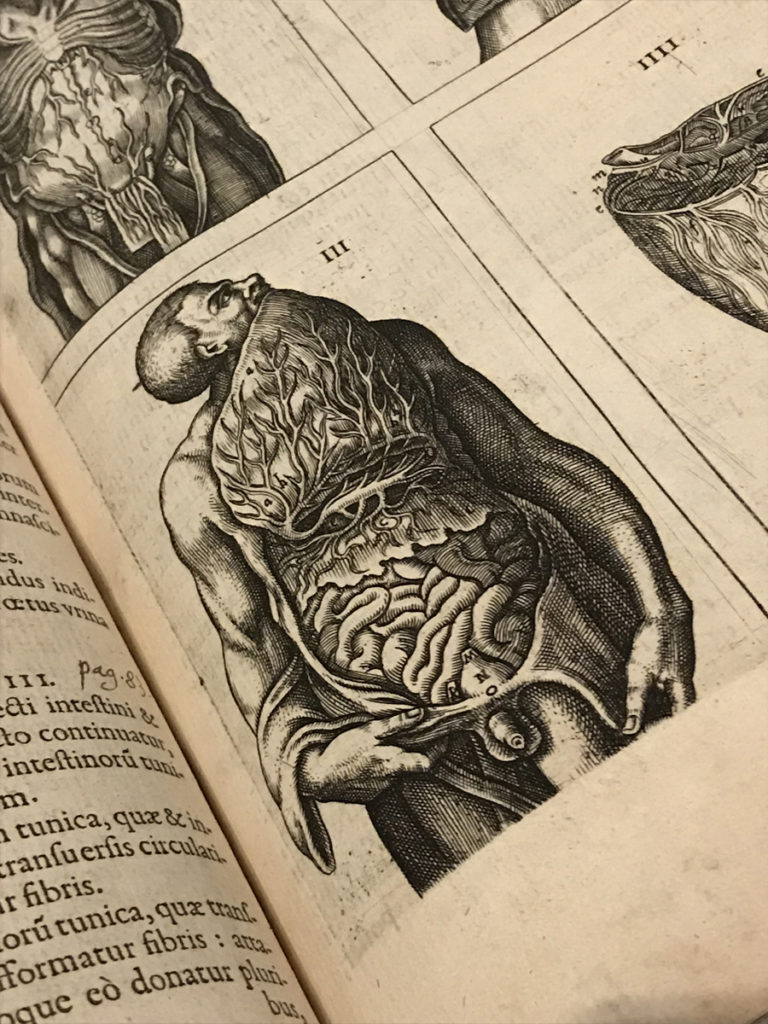

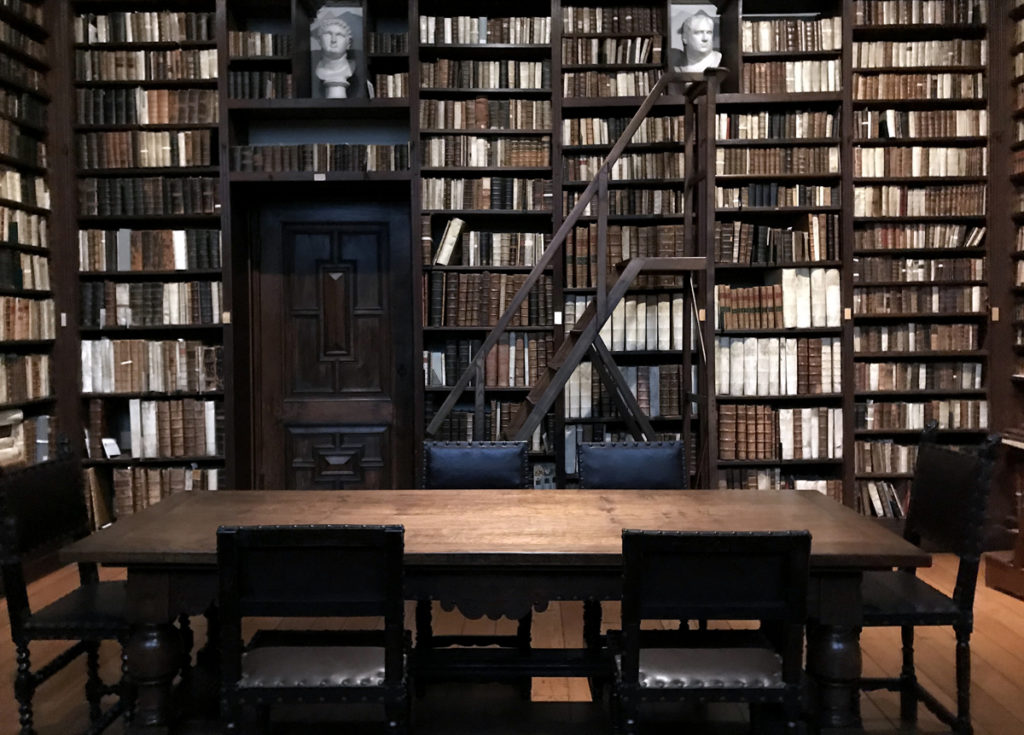
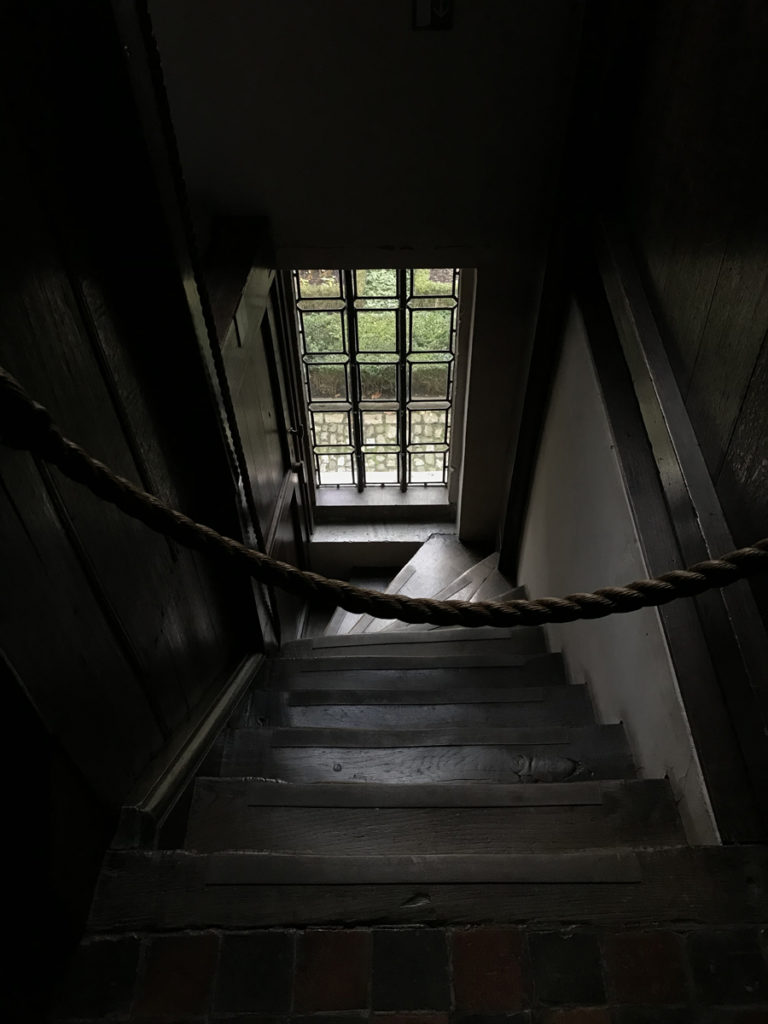
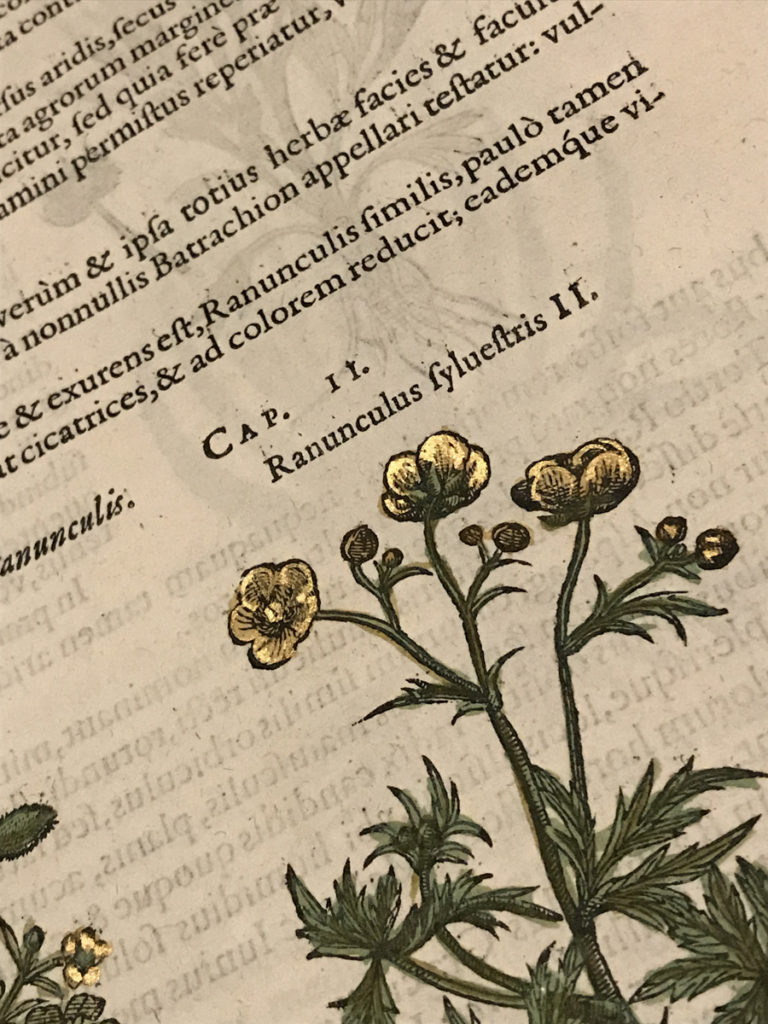
Back, out into the light, the rain gave break as we made our way to another UNESCO world heritage site, the seven aisled gothic beauty, the Cathedral of Our Lady.
Outside the cathedral is a sculpture of a boy and his dog, made of white marble, tucked under a paving stone blanket. The work, by Batist Vermeulen, pays homage to the characters Nello and Patrasche from the 19th century English novel, ‘A Dog of Flanders’. This is a tale of great sadness, so, I am going to share it with you.
Nello, an orphan, rescues a dog that was beaten close to death. They become inseparable friends, all they have is each other. After a series of desperately upsetting events Nello, a very talented artist, decides he wants to see Rubens’ paintings in Antwerp cathedral, but he can’t afford the exhibition entry fee. On Christmas Eve they find the church door open, by chance they can go in and see the paintings after all. The next morning Nello and Patrasche are found, cuddled together and frozen to death, in front of ‘The Descent from the Cross’. Apparently, the universal message here is that ‘friendship conquers all, even beyond death’. Let’s see what we can do with the living, shall we?
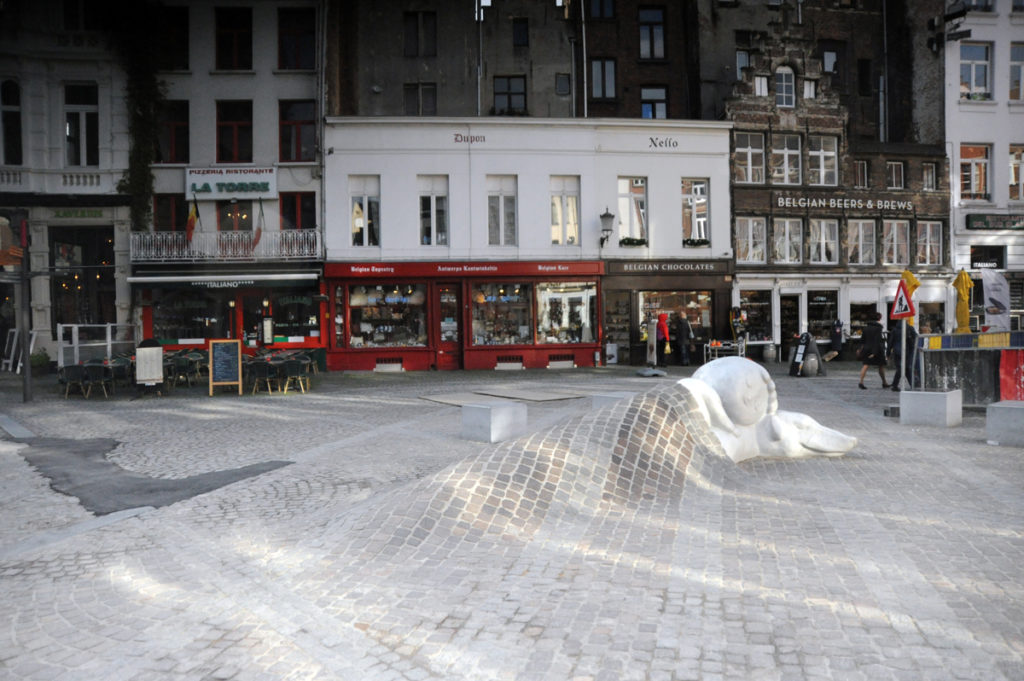
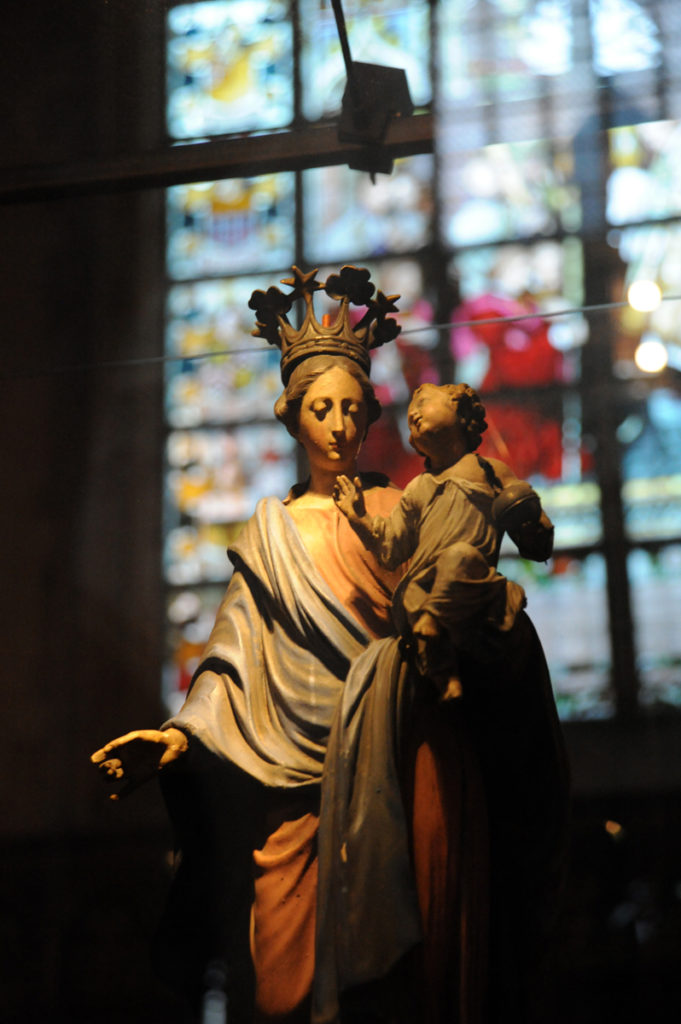
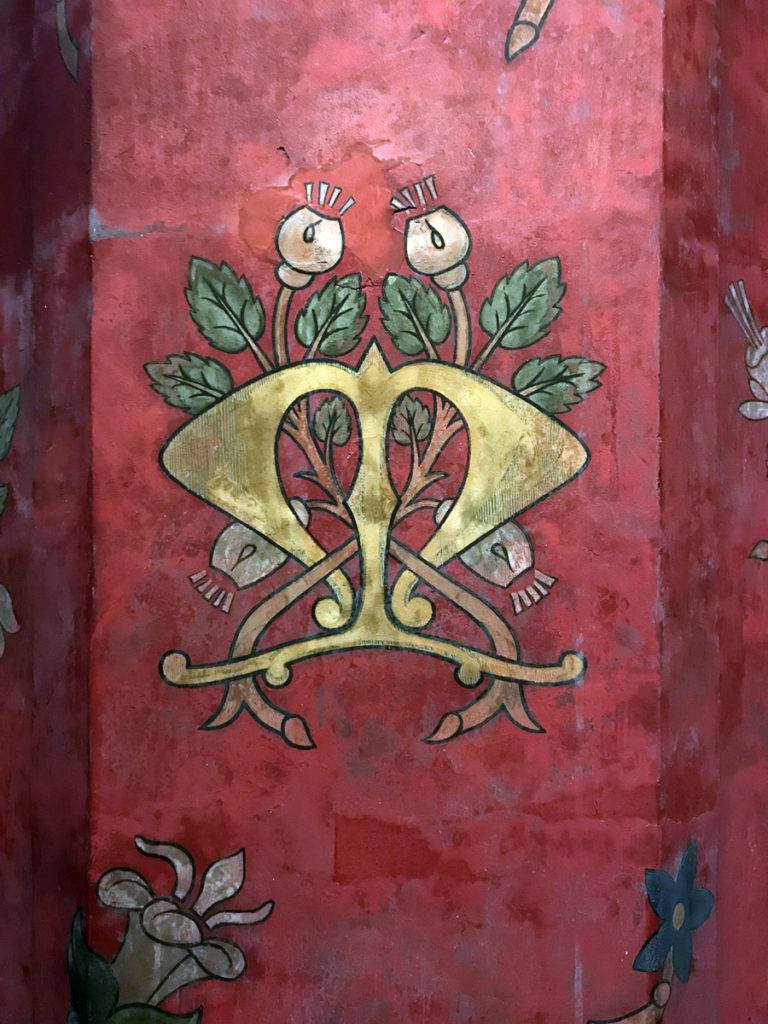
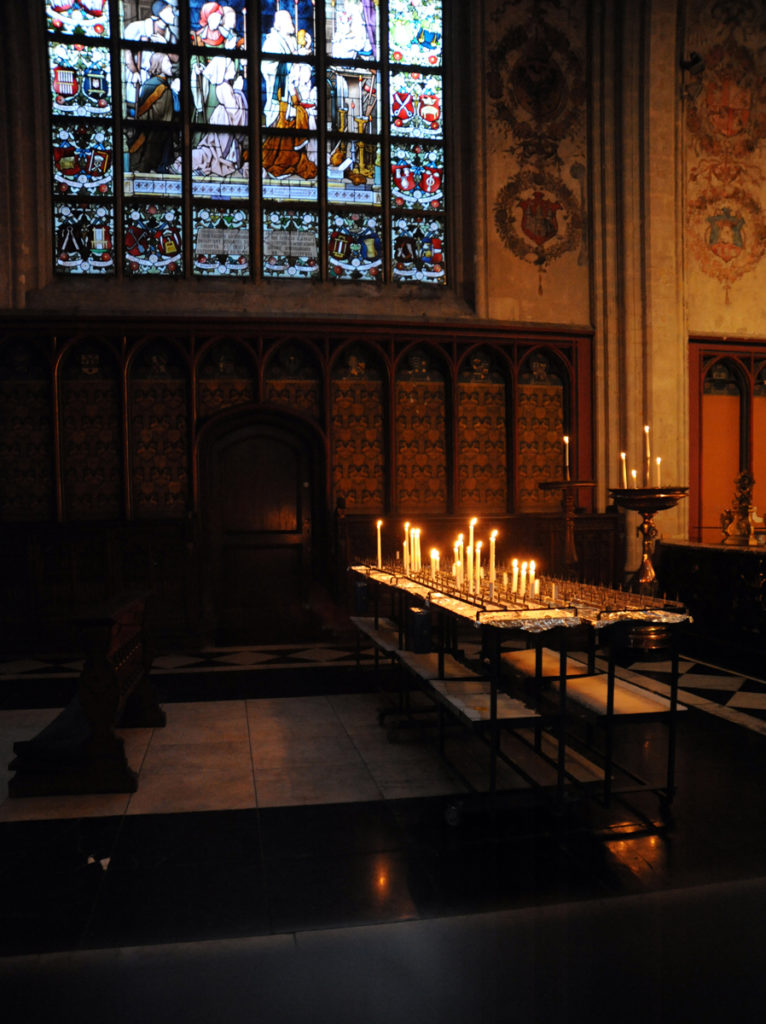
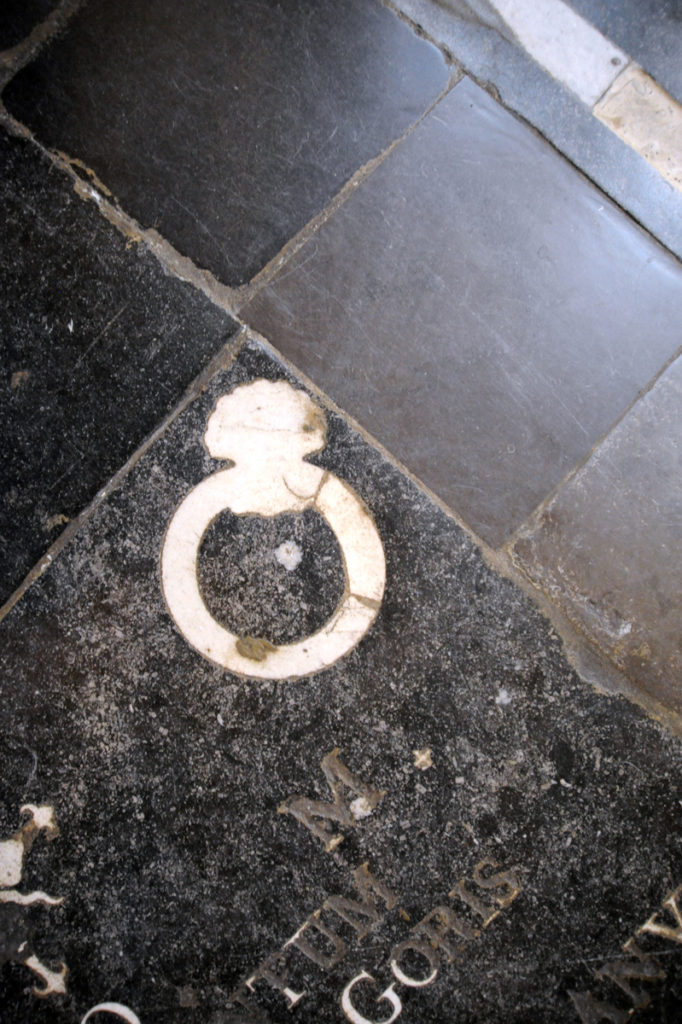
We took the multiple escalators to the rooftop of MAS, a warehouse-like museum, like a Tetris stack of red-brown sandstone with glass infills, set between two docks. We looked over the city, across the lights, watched trains and cars pass by, then took the multiple escalators back down, crossing the road to Restaurant Lux for a fabulous dinner (and a lovely tiled floor).
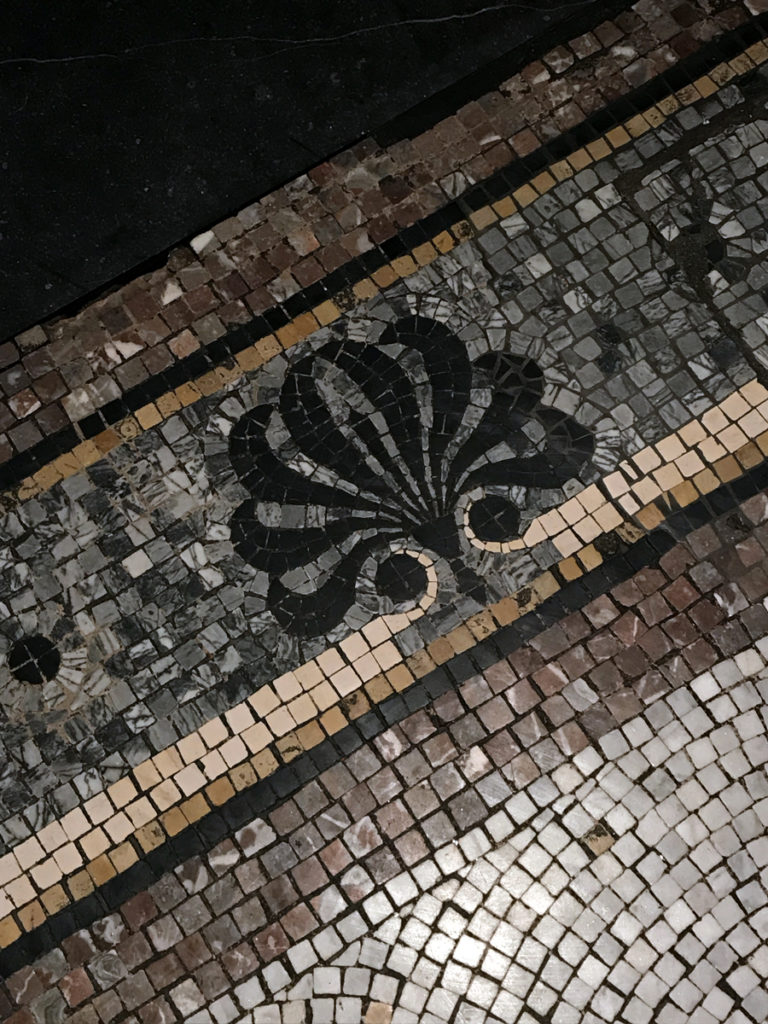
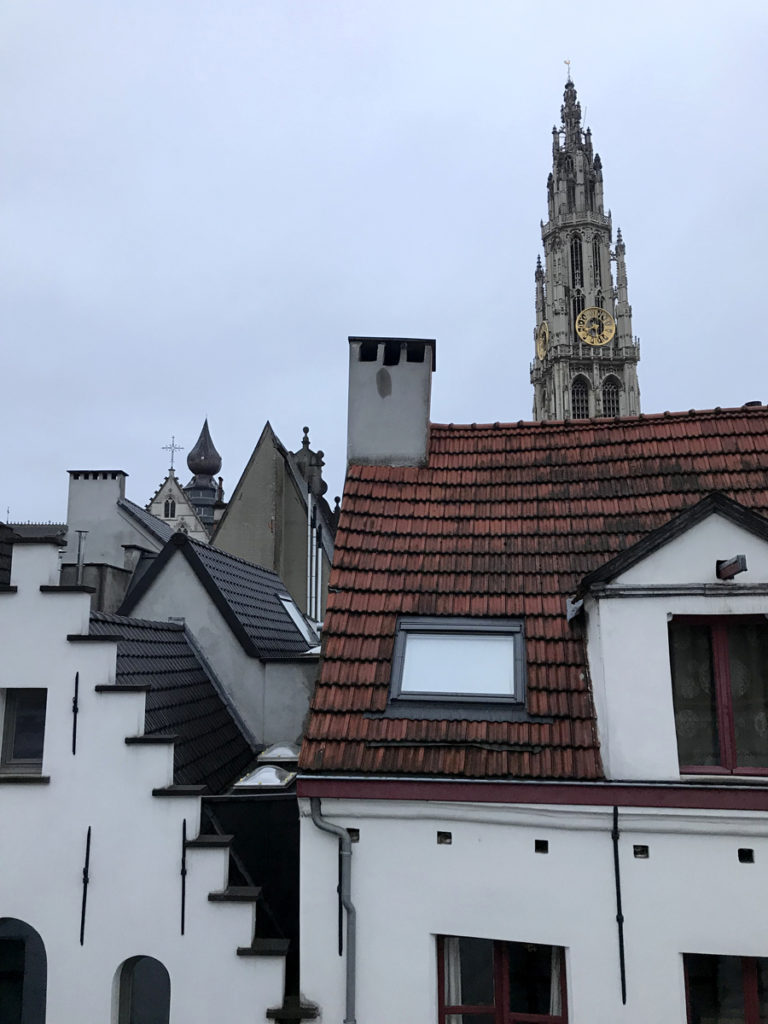
It was dark when I arrived in my room at the Hotel Rubens. Cool marble tables, nice lighting, huge bed that lured me with its soft white cotton and many pillows. I was asleep in no time at all.
My delight in the morning when I pulled back the curtains, opened the window wide and revelled in the beauty of it all – the crisp morning air, the peace and quiet, the years of buildings all layered together like the most magical cake.
We were up early, plodding across the city to The Rubens House. It’s actually a palace and his front room had gold leather covered walls. Rubens also owned a couple of castles.
Other things I learnt at The Rubens House: Pets in paintings were a thing in the 16th and 17th century. Some of Rubens work had the value of two houses, while he was alive. His studio was pretty much a factory, 3000 paintings were made there by ‘him’. Aside from being an artist, Rubens was a business man, a diplomat, and some say, genius. However enthralling a tour guide is, I still can’t help but wander off.
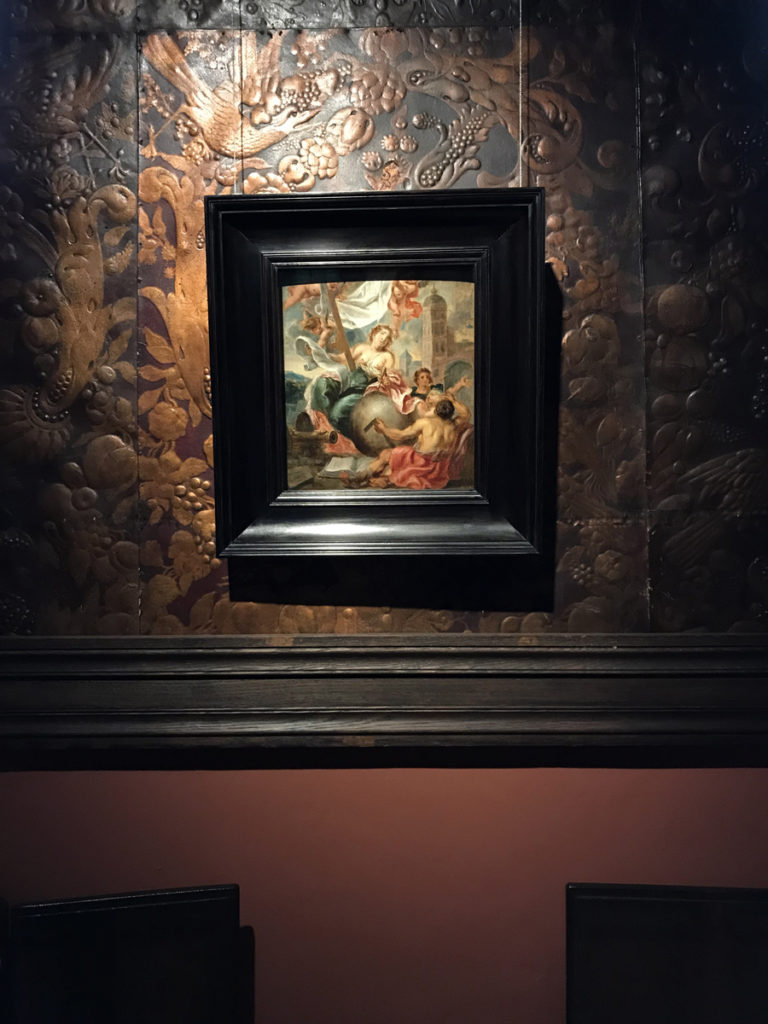
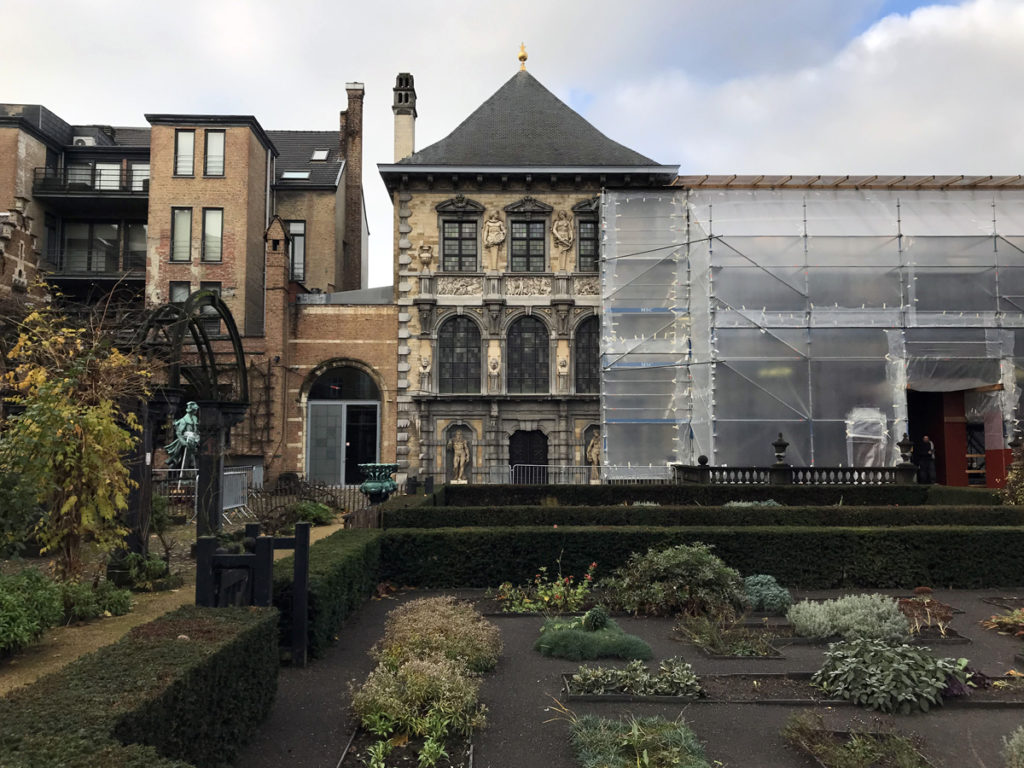

Fully Rubens’d up, we headed to our last stop in Antwerp, RAS, a delightful and calm restaurant, on one side overlooking the river Scheldt, and the other looking back at the varied architecture of the city.
The amber coloured beer, De Koninck, is brewed in the city of Antwerp, the goblet shaped glass it is traditionally served in is called a ‘Bolleke’.
After a delicious lunch and one final toast to a great trip, we were back on the road, heading down to Dunkirk for our ferry crossing home.
As we left the city we got a glimpse of the Port House from a distance, designed by Zaha Hadid, a century-old ex fire station sits beneath a new extension of epic proportions. An incredible diamond-like spaceship that needs to be seen to be believed.
My only question now is, when are we going back?
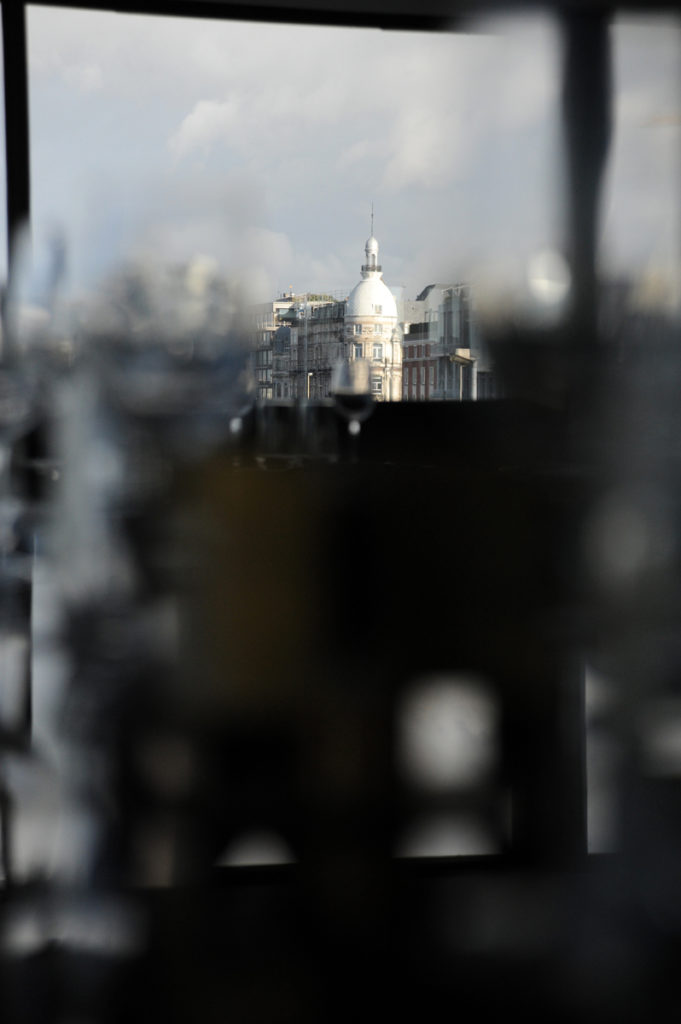
Frites Atelier Korte Gasthuisstraat 32, 2000 Antwerp
Museum Plantin Moretus Vrijdagmarkt 22, 2000 Antwerpen
Cathedral of Our Lady Handschoenmarkt 3, 2000 Antwerpen
Restaurant Lux Adriaan Brouwerstraat 13, 2000 Antwerpen
Hotel Rubens Oude Beurs 29 , 2000 , Antwerp
The Rubens House Wapper 9-11, 2000 Antwerp
RAS Ernest Van Dijckkaai 37, 2000 Antwerpen
DFDS operates services from Dover to Dunkirk and Dover to Calais. All Dover-France ships feature a Premium Lounge, which can be booked for an additional £12 per person each way.
With the greatest thanks to the wonderful people of Visit Holland and Visit Flanders for inviting me to join them on such an excellent adventure.
